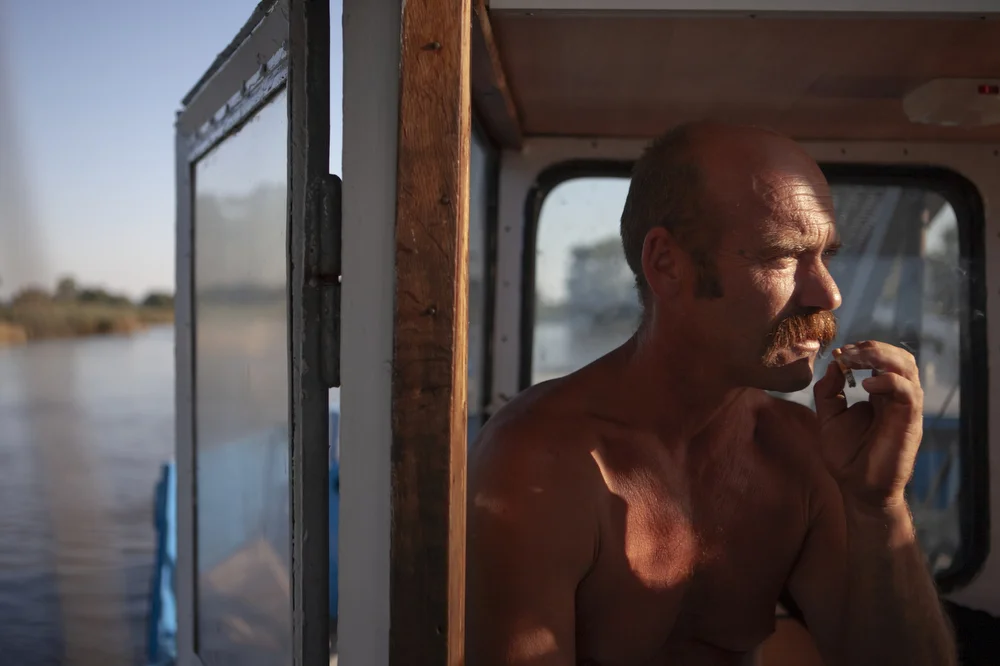
Huda Lutfi is a self-taught visual artist and is one of Egypt’s leading contemporary artists since the 90’s. She is trained as a cultural historian and earned her Ph.D in 1983. Her art practice is enriched by her historical research, and themes, such in her research manifests and in her artworks, such as Sufism, gender, and societal politics. Raised in a middle-class Egyptian family during the socialist era of the 60s and 70s, Huda Lutfi was surrounded by the value of working with one’s hands, exploring social, cultural, and traditional societal issues through her art practice.
In 1991, while teaching Arab Islamic History and Culture at Harvard University in Boston, Lutfi underwent a serious surgery: “It was like losing a part of my body, my creative part, the uterus.” It was extremely painful. This experience became the starting point for her artistic journey. “I don't know how I did it," she recalls, "but I started doing a collage of a woman cut in half. And that was my first collage. I forgot about the pain while I was doing that and then eventually realized, it was so much fun! I love doing that, I say this is my beginning.”
Lutfi went through different phases of artistic experimentation. She expanded her practice from collage to painting, assemblage of objects, installation, video, photography, and most recently stitching. In this latest work, Lutfi visits a new realm in her art practice inspired by her mother, stitching and sewing. Lutfi recalls the memory of her mother’s hands sewing her clothes when she was a child. Now Lutfi is in the process of working on the family archive. Using primarily fabric and domestic decorative objects and photographing them in order to produce work evoking her family’s history, and relating that to the wider context of Egyptian middle-class history. Lutfi’s multidisciplinary approach shapes her art practice, reflecting her versatility and willingness to explore new mediums.
Why did you retire or why are you still working?
Why did you retire?
Why are you still working?
Finding academia to be governed by rigid rules of writing and researching, I prefer embracing the rhythm and movement of my hands in creating. My relationship with art took the form of healing and catharsis.
Artists don’t retire! They continue to work. Their work changes because of the context and because of how they feel inside. But I can’t think of myself retiring. I think I will only retire if I’m physically unable to do so. I love my work, I left my academic work because I enjoyed doing art more. So that’s why I don’t think I will retire.
I would say to younger generations: “Let the art come from your own experience, inside and outside.” You learn the tools by constantly experimenting. That is why school may be good, it forces one to practice. I learned through personal practice, devoting time every day. Often, I used to come back home from teaching and continue my artwork till midnight. Generally, I work with an idea that comes to me, I catch it and then I start to work out the details as they come in practice. Using contemporary artistic tools, I would like to do more work inspired by Arab Muslim heritage, bringing the past to the present.















































































.svg)






